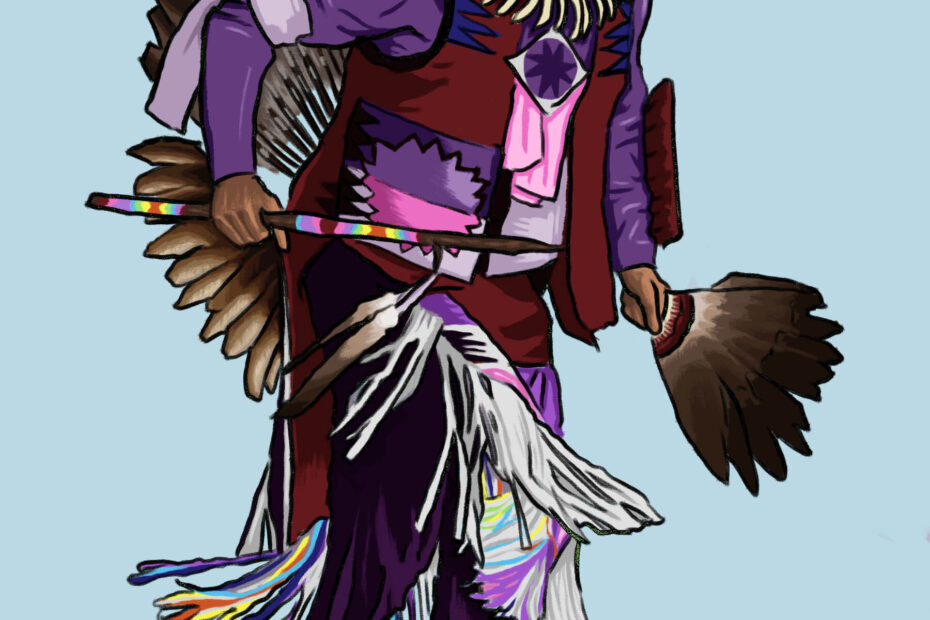As streams of people wandered through the indoor athletic complex, the hot air was charged with unusual excitement and curiosity. While some attendees were clutching their school bags, others circulated through sporting beautifully intricate traditional Indigenous garments. This marked the 23rd annual Pow Wow hosted by the First Peoples’ House and the Office of Indigenous Initiatives at Tomlinson Fieldhouse. The nearly seven-hour event scheduled on Friday, September 20th reiterated for some, but introduced to many, the variety and vibrancy of Indigenous culture.
Pow Wows are colourful celebrations gathering First Nations communities. Deeply rooted in the traditions of Indigenous peoples in North America, they allow individuals to socialize, dance, and sing whilst honouring their cultures.
Dancers flowed into the centre of the Fieldhouse during the Grand Entry and MCs Lance Delisle and Marie-Celine Charron delivered their opening remarks. Flags including that of the Haudenosaunee Confederacy were pinned up and honored. The participants at the event could not be more eager to kick off the day.
The agenda outlined a variety of cultural dancing such as Haudenosaunee social dancing and Métis jigging. People gathered around to watch performances of Inuit throat singing and drumming by the RedTail Spirit Singers, Ottawa River Singers, SpiritWind, and Spirit Wolf. Indigenous peoples of different Nations were encouraged to join in on the celebrations of culture. Dozens of vendors lined the walls of the Fieldhouse selling jewelry and fundraising for causes like Native Montreal, an organization that offers health and support services to Indigenous communities in the greater Montreal area.
The McGill Pow Wow provided non-Indigenous peoples with the opportunity to experience unique Indigenous traditions first-hand, serving as a valuable moment for cultural education. Attendees were encouraged to join in at many moments to learn dancing techniques. The Pow Wow conveyed to non-Indigenous peoples the importance of Indigenous heritage preservation, which was expressed by a first-year McGill student to The Daily after witnessing the Jingle dance. This was her first Pow Wow.
“There are so many dimensions to Indigenous culture that I am being introduced to today. Being in the presence of so many people [who are] willing to share their culture with others so openly is a gift,” she said.
Even members of the Indigenous community were impressed by the collective displays of culture. Kona Slays, an Indigenous entrepreneur of the fashion brand Love, Koko, took home first prize at the Ribbon Skirt special. She expressed to The Daily her excitement surrounding the Indigenous participants.
“My favorite event was the Jingle dancing,” Slays said. “I didn’t know that there were so many dancers!” She was rewarded $500 for her teal ribbon skirt.
Ribbon skirts represent the sacredness of womanhood and strength in many Indigenous cultures across North America. Named for the colourful rows of ribbons sewn along the bottom hem of the skirt, they have evolved into symbols of remembrance for the Missing and Murdered Indigenous women.
While an opportunity for commemoration and celebration, this year’s Pow Wow was also tinged with irony as the university fights the Kanien’kehá:ka Kahnistensera (Mohawk Mothers) in court over the possible presence of unmarked graves on the site of The Royal Victoria Hospital.
Mohawk Mothers were present at the Pow Wow as well, highlighting above all the resilience of the Indigenous community and the importance of healing on Kanien’kehà:ka land.
